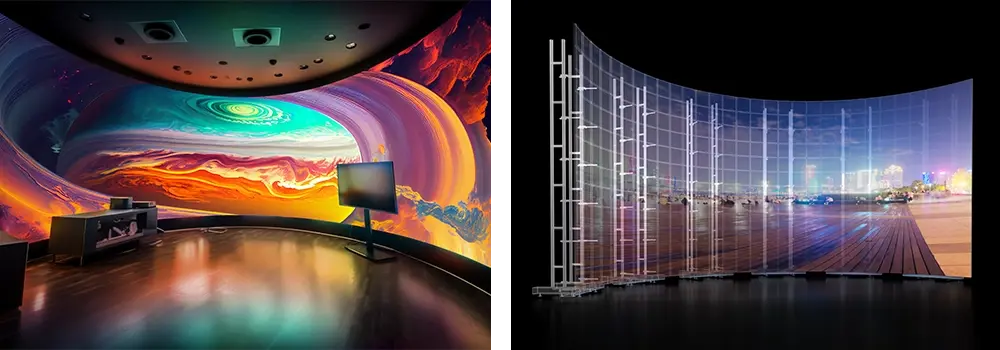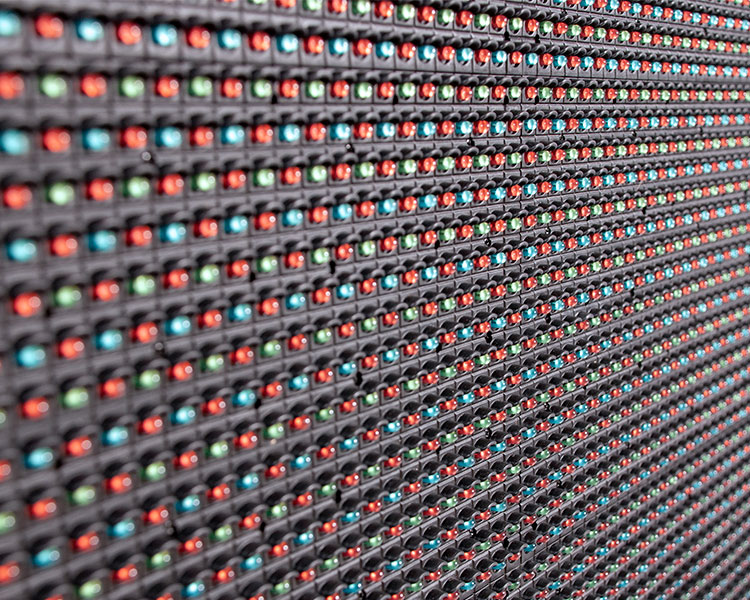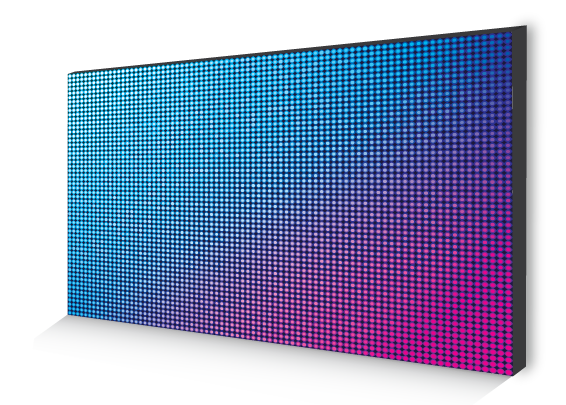New Info To Picking Outdoor Fixed Led Display
Wiki Article
How Important Is Durability And Weather Resistance When You Are Researching Led Displays?
Be sure to consider the durability and weather resistance of your LED display especially if you're planning to place it outside or in areas with high traffic. Here's why they are crucial:
1. Longevity and Cost-Efficiency
Durability. LED displays that are built to last can withstand vibrations, impacts, and other physical strains. The display will last longer and will require less maintenance or replacement. This results in better cost efficiency over time.
Application: If the display is situated in an area where it is susceptible to damage (such as public spaces such as sports venues, public areas, or even rental markets) Durability is crucial to make sure the longevity of your investment.
2. Outdoor Performance
Weather Resistance: Outdoor LED displays are constantly subject to various weather conditions that include snow, rain winds, variations in temperature. Displays that are weather-resistant are designed to work reliably in these conditions, without compromising performance.
IP Rating IP Rating is a number which indicates the level of protection against water and dust. Minimum IP65 rating (protection from water and dust jets) is suggested for outdoor displays. This ensures the display can endure harsh conditions, without short-circuiting or corrosion.
Application: For outdoor installations, like digital signage and stadium screens, it is vital that the weather-proofing of the screen be maintained. If a display fails to function in poor weather, it can lead to expensive downtime as well as repair.
3. Temperature resistance
LED displays are vulnerable to temperatures that are extreme. They can be subjected to hot and cold extremes, which can affect their performance. The most effective displays work in a wide temperature range. Most of them have built-in heating and cooling systems that ensure maximum performance.
Application: For extreme environments like deserts with high temperatures, or winters with low temperatures, choosing an LCD display with enough temperature resistance will ensure consistent performance all year round.
4. and protection from moisture and Moisture protection
Waterproofing LED displays Displays that are waterproof stop moisture from entering the internal components that could result in short circuits or even damage. It is vital to make sure that the LED display can withstand environments with high moisture or heavy rainfall.
Application: To ensure that there are no failures and to increase the life of displays, waterproofing of displays located in areas with coastal or near bodies of water is essential.
5. UV Protection and Sunlight Durability
UV Resistance - Prolonged exposure can discolor or deteriorate displays. UV-resistant displays can resist the harmful effects of UV radiation, and maintain their appearance and performance for a long time.
Application: In sunny areas or places where the screen is exposed to direct sunlight, UV resistance is important to avoid fading and preserve image quality.
6. Safety and Compliance
Fire Resistance: For security reasons, it is important that display structures are resistant to fire. This is particularly important in indoor environments where high usage is common, like concert venues or malls.
Application: The display must conform to the applicable safety standards in order to protect investment as well as comply with local laws and regulations.
7. Reduction in downtime and maintenance
Low maintenance : Displays which are weather resistant and durable require less frequent maintenance because they are more likely to be less prone to damage caused by environmental factors. This reduces downtime and cost of maintenance.
Application: In applications where downtime is costly or disruptive, for example in transportation hubs, or emergency information systems, the durability and weather resistance ensure the display remains operational with minimal effort.
Conclusion:
For LED displays to be long-lasting, reliable and cost-effective, they should be durable and resistant to extreme weather conditions, especially in locations where there is a lot of stress or outside. These aspects protect your investment by making sure that the LED display is able to withstand extreme conditions, reduce the amount of repairs required and maintain an unbeatable performance. When looking into LED displays, focusing on the durability and resistance to weather is crucial when considering applications where environmental elements are a major factor. See the most popular cob led display for website recommendations including flexible led display screen, translucent led screen, flexible led screen display, led wall, led board rental, tv led wall, church video wall, wall tv led, led board, led screen panels and more.

How Important Is Viewing Angle When Looking Into Led Displays?
The angle of view is an important aspect to take into consideration when evaluating LED displays, especially in applications where the display is to be viewed from various locations and angles. Here are some of the reasons the angles of view are so important:
1. Uniform Image Quality
Definition: The angle of view for LED displays refers to the maximum angles at which the display is viewed in a way that offers an acceptable visual performance, usually in terms of brightness or color uniformity. The angles of viewing are typically described in both the horizontal and vertical direction.
The wider the viewing angle is, the more images will remain stable. This means colors won't shift and brightness does not decrease when viewing on the sides or below/above.
2. Audience Experience
Impact on Large Venues. In large venues, such as stadiums concert halls as well as conference centres, the audience members are spread across the entire space. Displays with a narrow view angle could cause poor visibility or a degraded quality image for those who are seated at the right angles.
Application Wide viewing angles ensures that everyone is able to see the information clearly and clearly. This is crucial when it comes to large-scale installations, or events that have a large audience positioned in front of the display.
3. The suitability of public Spaces
Public Display Applications for Public Display. In locations such as shopping centers or transportation hubs, where people are observing the display from all directions, the viewing angles is crucial. The display's effectiveness in engaging and attracting people to visit is limited by a narrow viewing angle.
Application: A wide viewing angle is ideal for digital signage display in public spaces. This maximizes the reach of their display and allows the content to be seen from multiple angles.
4. Content Consistency
Color and brightness uniformity display with low viewing angles could display color shifting or brightness decreases when viewed from angles off-center. This inconsistency may be problematic for content that is brand-related, and color accuracy matters.
Application: In situations where brand recognition and uniformity of color are crucial, such as retail displays or corporate environments, a wide viewing angle guarantees that the display is able to maintain its intended appearance across all viewing angles.
5. Installation Flexibility
The flexibility of placement The flexibility of a display with a large viewing angle allows for more flexibility when it comes to where it can go. As an example, it offers more innovative placement options such as wrapping the display around columns or putting it in areas where viewers can view from different directions.
Applications: LED displays that have large viewing areas are ideal for artistic or creative display. This includes displays in art galleries, museums, and immersive experiences.
6. Renting and staging through Performance
Event Setting: If you are renting or staging exhibits, which can be set-up in a variety of configurations, the wide-viewing angle will ensure that they will perform flawlessly regardless of the place where audiences are positioned.
Application: For events, concert or trade show, where the audience may be moved around or the screen is seen from multiple locations, a wide viewing angle guarantees that all participants are able to enjoy a clear experience of the information.
7. Impact on ROI
Maximizing Visual Impact Wide-angle displays can attract an audience that is larger, which increases its impact as well as the return on investment. It is very important to increase the visibility of advertisements or screens that provide information.
Application in a commercial setting to increase engagement, ensuring the display's visibility from multiple angles could increase the effectiveness of displayed content.
Conclusion:
The angles of view are an important factor that directly affects the efficiency of LED displays. It is crucial in environments in which there are a lot of users, as the display may be seen from multiple angles or content consistency is essential. A wide viewing angle is essential when you are researching LED displays so that the display meets your application's needs and provide an enjoyable viewing experience for everyone. View the most popular led rental screen for site examples including led video wall panels, transparent screen monitor, display screen led, transparent screen monitor, wall tv led, led in the wall, led panel transparent, led wall panels, transparent screen, outdoor display led and more.

How Important Is Cost, Roi And Energy Efficiency When You Are Researching Led Displays?
When looking into LED displays it is essential to consider aspects like costs, ROI, and energy efficiency. These are crucial as they directly impact on the financial viability and long-term advantages. Let's look at the reason why each one of these aspects are important:
1. The Initial Cost
Budget considerations: The upfront price of purchasing LED displays could be major consideration for any project. It is not only the cost of the display itself but also the expenses of installation, mounting structures, as well as any accessories required.
Cost vs. Quality The initial cost of a screen may look attractive, but it may come with a price in terms durability, quality, or other features. It is crucial to weigh the initial cost against the desired display performance and its durability.
Application: In situations where budget constraints are tight, careful consideration of cost and performance is essential. Displays with high-end features are typically needed for specific applications, such as advertising in high-traffic locations. However areas that are less demanding may need a cheaper display.
2. Return on Investment (ROI).
Revenue Generation: ROI is often dependent on the capacity of LED displays to generate income. This could be via marketing, customer engagement, or brand visibility. Displays that are effective at attracting attention and delivers impactful content could yield a significant ROI by driving revenues from sales or advertisements.
Longevity and Durability: High-quality displays that are more durable and have longer lifespans typically offer greater ROI since they need less frequent replacement and have lower maintenance expenses over time. The initial investment is more expensive, but it will pay off through reduced cost over time.
Impact of Features and ROI Features such as high-resolution, wide viewing angles and high brightness, although they may be more expensive initially, they can boost the effectiveness and efficiency of the screen. This leads to an increase in ROI because of increased audience participation and accessibility.
3. Energy Efficiency
Cost of operation: The capacity to cut costs with an LED display is contingent on the energy efficiency of the display. Lower electricity bills are a result of displays that consume less energy. This is particularly important for large displays and installations which are operational continuously.
Environmental Impact Energy-efficient displays can contribute to the sustainability goals by decreasing the carbon footprint. This is becoming increasingly crucial for businesses and organizations that have a strong commitment to sustainability or must comply with the regulations on energy.
Long-Term Savings: While energy-efficient displays might have a higher initial price but the savings on energy costs over the lifetime of the display could be significant, which can boost the overall ROI.
Applications: for installations located in regions with significant energy costs or large-scale installations in which power consumption is high, energy efficiency can make an important difference in operational costs.
4. Total Cost of Ownership
Repairs and maintenance. The total cost includes the cost of purchasing and also the cost for maintenance, repairs, and downtime. Displays that last longer and last longer typically offer lower TCO which makes them an economical choice in the long run.
Enhancements and Scalability: Consider the ease of upgrading or scaling up the display. A modular display that is able to be upgraded or expanded for a low cost could be a long-term investment.
Application: When displays are scheduled to operate for long period of time (such as in public areas and corporate settings, or in high-traffic retail areas) using a TCO-based method makes sure that the investment remains cost effective over time.
The Financing Options
Flexibility of Financing: Many companies offer leasing or financing options that allow you to reduce the initial costs of a high-quality display. This is especially beneficial for companies that need to keep cash flowing, however, they also want to invest in top-quality digital signage.
ROI Considerations: Leasing options can have an impact on ROI since they let businesses upgrade to newer technology without having to make huge initial investments, ensuring that the displays are up-to-date and efficient in terms of generating returns.
6. Market Competitiveness
Cost vs. ROI and cost can affect your capacity to compete in the marketplace. A higher-quality display can help you to differentiate yourself from the competitors, and draw in more customers.
Application: In sectors with lots of competition such as retail and entertainment, investing in displays that are better quality, yet also provide a better ROI, can provide you with an edge.
Conclusion:
The cost, return on investment, as well as energy efficiency all play an important role in determining the long-term value of an LED display. Balancing initial cost with the expected return on investment, considering the energy efficiency of your display to lower operational costs, and then calculating the total cost of ownership will help to ensure that the display is in line with the expectations of both performance and financial. These elements are essential for making a decision that is within your budget and long-term goals. See the top rated lightweight led screen for site examples including outdoor digital display, screen led display, led wall panels, led screen display rental, led board, church led wall, outdoor led display screen, transparent screen monitor, tv the wall, board led and more.
